Of all the elements of bathroom renovation, the countertop is undoubtedly a core that cannot be ignored. Whether you are pursuing a fashionable modern style or want to retain a classic traditional style, the choice and decoration of the bathroom countertop will directly affect the beauty and practicality of the entire bathroom.
In this comprehensive renovation guide, we will answer various questions you may encounter during the renovation of the bathroom countertop, from whether the countertop needs to be renovated to how to choose the right materials. Let's explore how to give your bathroom a new look!
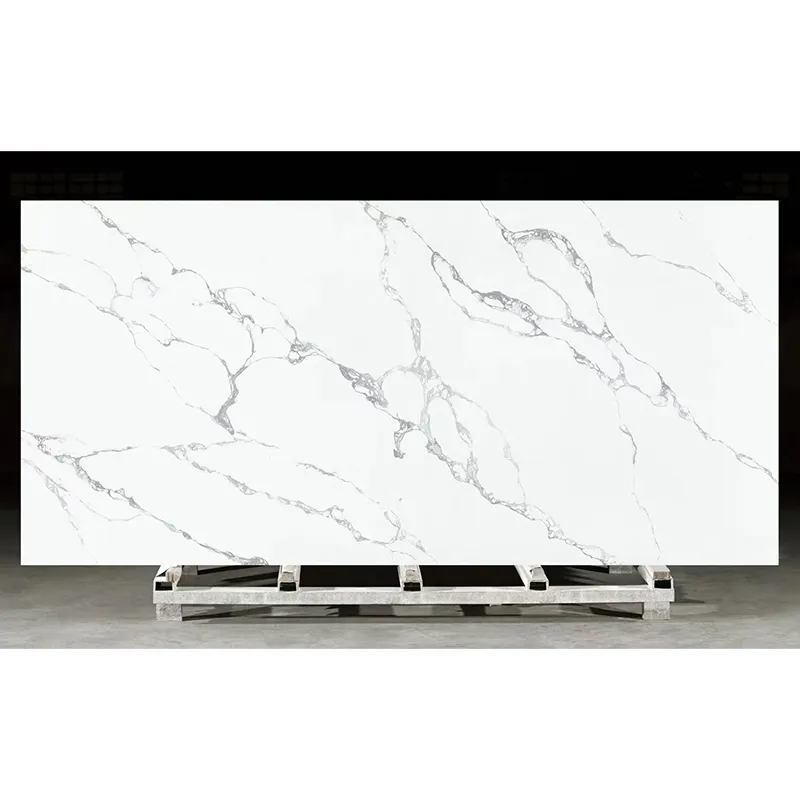
Does your bathroom countertop need to be renovated?
Before deciding whether to renovate the bathroom countertop, you first need to assess the condition of the existing countertop. Are there obvious wear, scratches or stains? Has the color become old and dull? Or are you just tired of the existing design and want a change of style? These are all important factors to determine whether it is necessary to renovate.
● Obvious damage: If your bathroom countertop has obvious scratches, cracks, burns or other physical damage, then it is time to consider renovation.
● Surface stains that are difficult to remove: If the countertop has stains that cannot be removed and even affect the overall aesthetic, renovating is also a good choice.
● Outdated style: If the color or design style of your bathroom countertops is outdated and no longer meets your current aesthetic needs, it may be a good idea to give it a stylish update.
● Aging countertop materials: Some countertop materials will age over time and lose their luster and texture. In particular, wood and laminates are easily affected by moisture and deform or corrode.
Whether it is because the countertop is damaged or you just want to update the style, refinishing the bathroom countertop can bring new life to your bathroom.
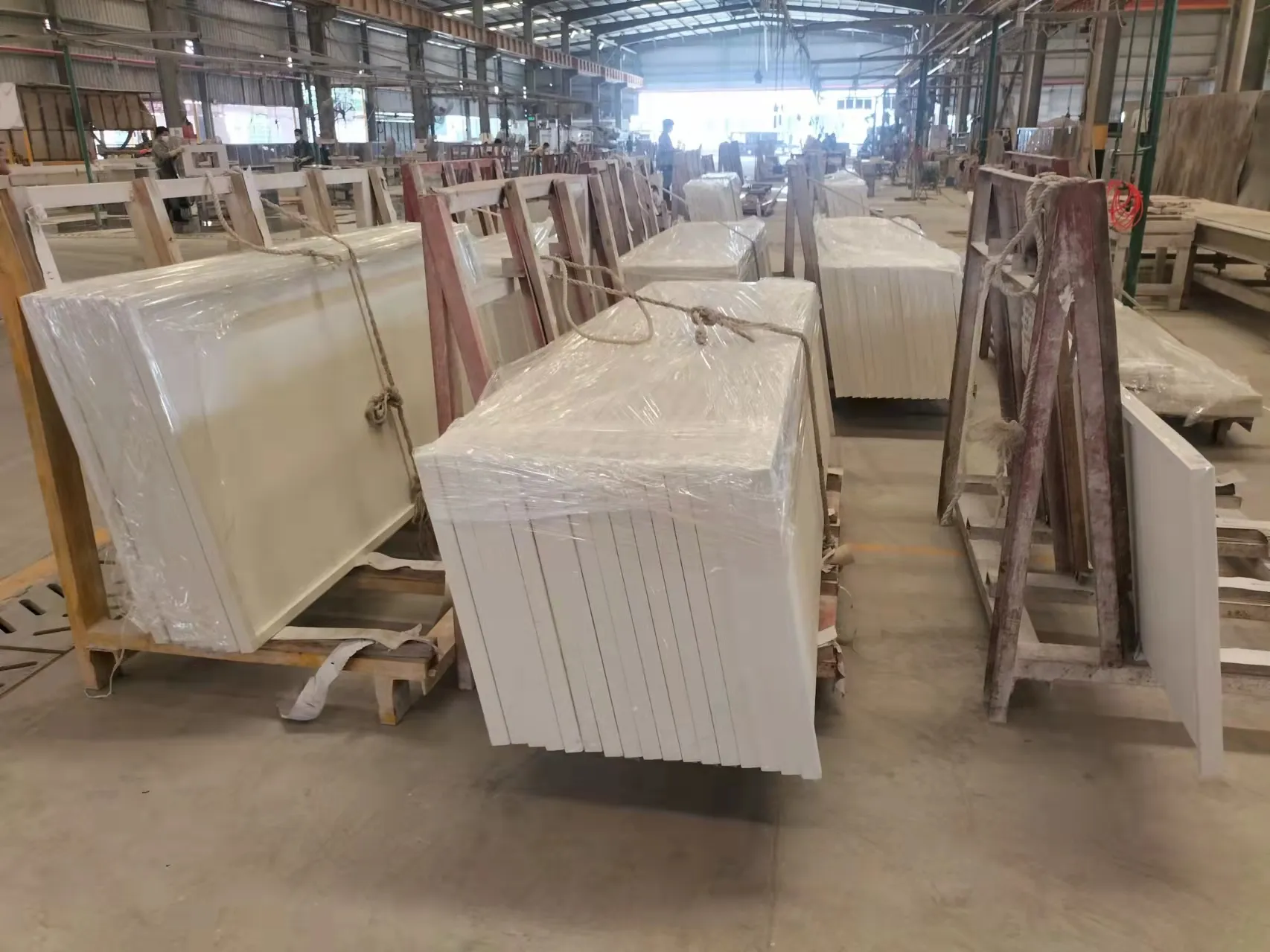
How to paint bathroom countertops?
If your bathroom countertops are just a little old in color or have minor wear and tear, repainting may be a simple and effective solution. However, painting bathroom countertops is not as simple as applying a few coats of paint on them. It requires certain skills and preparation.
Step 1: Preparation
Before you start painting, you first need to thoroughly clean the countertop to ensure that the surface is free of dust, oil stains and dirt. Next, sand the countertop with sandpaper to remove the smooth coating on the surface and increase the adhesion of the paint. If there are any cracks or dents in the countertop, it is recommended to use filler to repair them and then sand them flat.
Step 2: Choose the right paint
For bathroom countertops, it is recommended to choose waterproof and mildew-resistant paint. This type of paint can not only withstand the humid environment common in the bathroom, but also maintain long-term beauty. In addition, consider using epoxy resin paint designed for high humidity environments, which is not only wear-resistant but also provides an extra layer of protection.
Step 3: Paint the countertop
When painting, it is recommended to use a roller for large areas and then use a small brush to deal with corners and details. Generally, two to three coats of paint can achieve the desired coverage effect. Allow sufficient drying time between each coat of paint, usually 4-6 hours. Finally, if you want to increase durability and gloss, you can apply a layer of clear protective paint after the paint dries.
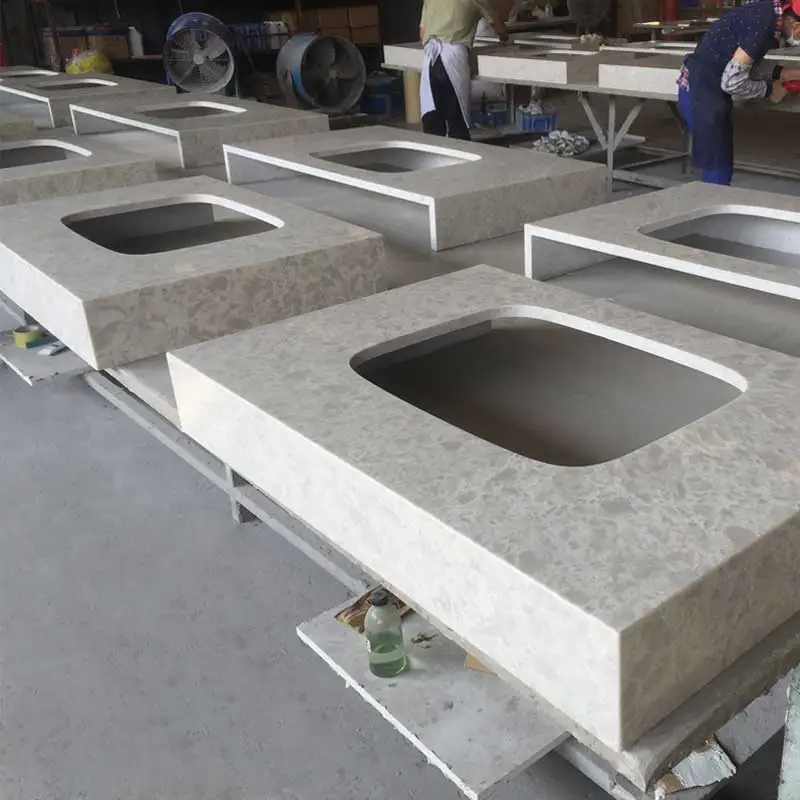
How to organize bathroom countertops?
Bathroom countertops are often occupied by various sundries, such as cosmetics, toiletries, etc. First, clear out items that you don’t use often and store them in drawers or storage cabinets. Keep your countertops minimal and only keep daily necessities. To prevent your countertops from becoming cluttered, use storage boxes or trays to organize your items into categories. This not only keeps things tidy, but also makes it easier for you to find what you need.
If countertop space is limited, consider installing shelves or hanging storage racks on the wall, which can effectively use vertical space and reduce the number of items on the countertop. For example, towels, hair dryers, etc. can be hung on the wall instead of stacked on the countertop. Finally, regular cleaning and organization are important steps to keep your bathroom countertops tidy. Spending a few minutes each week to remove stains and dust from the countertops and reorganize the location of items can avoid clutter.
How to replace bathroom countertops?
If your bathroom countertops are no longer able to be improved by simple repairs or painting, replacing the countertops may be the best option. Although replacing bathroom countertops may sound a bit complicated, it is not difficult as long as you proceed step by step.
Step 1: Measure and select countertop materials
Before replacing the countertop, you first need to accurately measure the dimensions of the existing countertop. This includes data such as length, width, and thickness, and pay special attention to the location and size of the sink opening. According to the measurement results, choose the appropriate countertop material. Common bathroom countertop materials include marble, granite, quartz, tiles, etc. When choosing, you can consider their durability, aesthetics, and coordination with the overall style of the bathroom.
Step 2: Remove the old countertop
When removing the old countertop, you need to turn off the water supply and remove the sink and faucet. Next, use a knife or pry bar to carefully separate the countertop from the base cabinet to avoid damaging the base cabinet structure. If the old countertop is glued, you can use a cutting tool or solvent to loosen the glue.
Step 3: Install the new countertop
Place the new countertop on the base cabinet, making sure it fits well with the base cabinet and the wall. If necessary, you can use sandpaper or cutting tools to properly trim the countertop. Next, use a special countertop glue to fix the countertop to the base cabinet and press the countertop with a heavy object to ensure that it is firmly bonded.
Step 4: Reinstall the sink and faucet
After installing the new countertop, you can reinstall the sink and faucet. Make sure all joints are well sealed to prevent water leakage. If you are not sure how to install it, it is recommended to consult a professional to ensure that the installation process is smooth and safe.
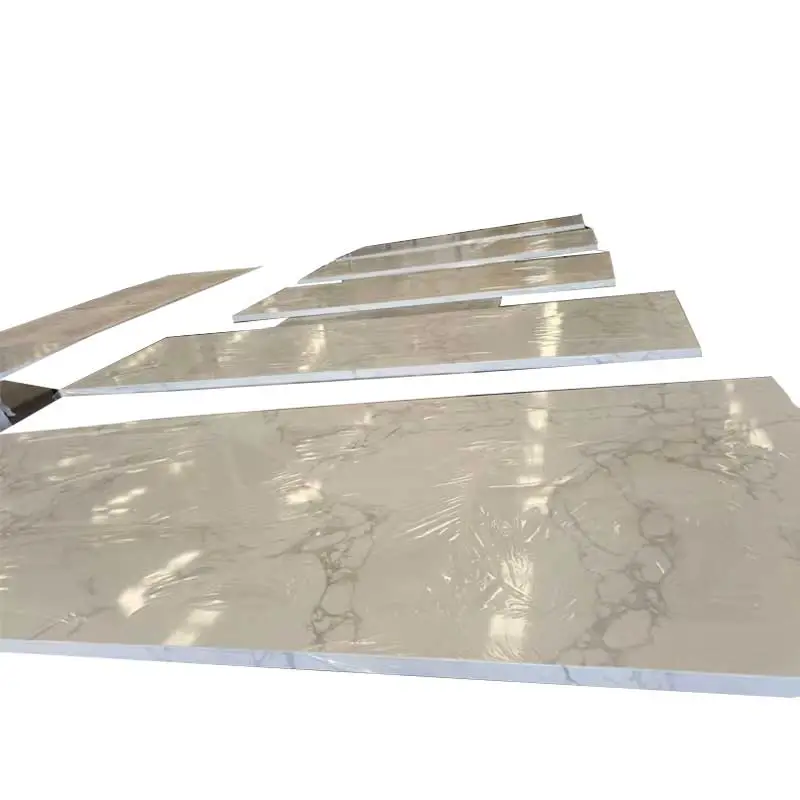
How to clean the bathroom countertop?
Keeping the bathroom countertop clean not only helps to extend the life of the countertop, but also improves the overall hygiene of the bathroom. Countertops of different materials require different cleaning methods. Here are some cleaning suggestions for several common countertops:
Marble and granite countertops
These natural stone countertops need to be cleaned with a mild detergent and avoid using acidic or alkaline detergents to prevent corrosion and damage to the stone surface. You can use neutral soap or a special stone cleaner and gently wipe the countertop with a soft cloth. After cleaning, it is recommended to wipe the countertop with a dry cloth to avoid water stains.
Quartz Countertops
Quartz countertops are stain-resistant and wear-resistant, but they also need to be cleaned regularly. Use warm water and mild soap to wash the countertop, then wipe it dry with a dry cloth. If you encounter stubborn stains, you can use a non-abrasive cleaner, but avoid using bleach or strong acid cleaners.
Tile Countertops
Tile countertops are more durable, but dirt easily accumulates in the gaps between tiles. When cleaning, you can use a mild detergent and a soft brush to clean the surface of the tile, focusing on the gaps. To prevent mold growth, you can regularly use a mildew inhibitor to treat the gaps between tiles.
Wood Countertops
Wood countertops are relatively fragile and require special care. Use warm water and a mild detergent to clean the countertop, and avoid letting moisture stay on the countertop for a long time. After cleaning, you can use wood care oil or wax to maintain the countertop to prevent cracking and discoloration.
How to remove a bathroom countertop?
If you decide to completely replace your bathroom countertop, removing the old countertop is an inevitable step. Although this task may seem a bit challenging, you can do it yourself as long as you follow the steps.
Step 1: Turn off the water
Before you begin the demolition work, be sure to turn off the water supply to the bathroom to avoid leaks during the demolition process. Next, use a wrench or screwdriver to remove the sink and faucet, and be careful to save all screws and accessories.
Step 2: Remove the accessories on the countertop
If there are any accessories on the countertop, such as mirrors, lamps, or sockets, you need to remove them first. This will not only help avoid damaging these accessories when removing the countertop, but also provide more room for operation during the demolition work.
Step 3: Remove the countertop
Use the appropriate tools for removal depending on how the countertop is fixed to the base cabinet. If the countertop is glued, you can use a knife or pry bar to carefully separate the countertop from the base cabinet. For countertops fixed with screws, just use a screwdriver to remove the screws. During the demolition process, it is recommended to work with two people, especially when dealing with heavier stone countertops.
Step 4: Dispose of the discarded countertop
The old countertop that is removed may require professional garbage disposal services to deal with, especially for heavy materials such as marble and granite. If the countertop is in good condition, you can also consider donating or recycling it.
How to renovate the bathroom countertop?
Countertop renovation is not just a simple replacement and repair, but more importantly, it is necessary to consider the combination of overall style and practicality. First of all, the choice of countertop material directly affects the overall style and user experience of the bathroom. Marble, granite, quartz, tile, concrete, etc. are all common choices, each with its own advantages and disadvantages. Choose the right countertop material according to your budget and personal preferences.
No matter which countertop material you choose, it needs to be coordinated with the overall style of the bathroom. For example, a modern-style bathroom can be matched with a simple and elegant quartz countertop, while a traditional-style bathroom is more suitable for warm and natural wood or marble countertops. In addition, the practicality of the bathroom countertop should not be ignored. For example, the water resistance, stain resistance and easy cleaning of the countertop are all factors that need to be considered. Choosing materials that are easy to maintain can reduce the trouble of daily cleaning and maintenance.
How to install a bathroom sink on the countertop?
The installation of the sink is a crucial step in the decoration of the bathroom countertop. First, according to the size of the sink, accurately measure and mark the opening position on the countertop. Make sure that the position of the sink opening is aligned with the position of the drain pipe and faucet in the base cabinet. Then, use a drill to make pilot holes in the marked corners, and then use a cutter or saw to cut the sink opening along the marked line. Be careful when cutting to ensure that the cut line is flat and smooth. Some basic tools you need to install the sink, such as screwdrivers, sealants, wrenches, etc. In addition, you need to prepare the parts required for installation, such as water pipes and drain accessories.
Then, place the sink in the opening on the countertop to ensure that the sink fits well with the opening. If the sink is recessed, you can apply a layer of sealant on the edge of the sink and gently press the sink onto the countertop. For under-counter sinks, you need to use brackets or screws to fix the sink under the countertop to ensure that it is firmly fixed.
After installing the sink, the next step is to connect the water pipes and drainage system. According to the design of the sink, install the corresponding water inlet pipes, drain pipes and overflow pipes, and ensure that each connection is well sealed to avoid leaks.
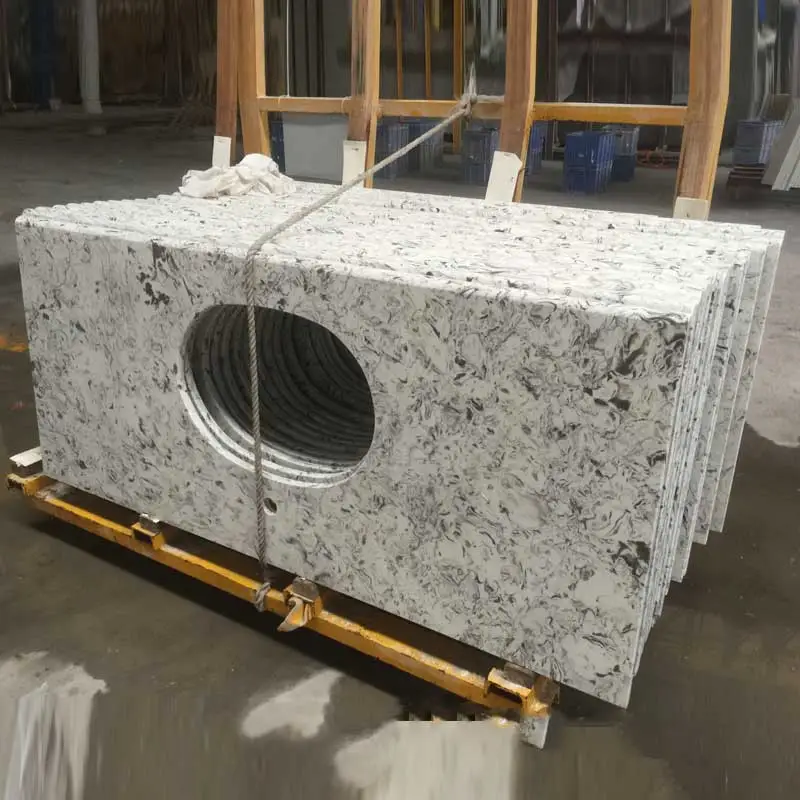
What is the best bathroom countertop material?
There are many factors to consider when choosing the best bathroom countertop material, including durability, aesthetics, ease of maintenance and budget. Here are several common bathroom countertop materials and their pros and cons:
Marble
Marble countertops are known for their unique texture and elegant appearance, and are particularly suitable for high-end bathrooms. However, marble is relatively fragile and easily corroded by acidic substances, requiring regular maintenance.
Granite
Granite is a very durable natural stone. It is stain-resistant and heat-resistant, but the price is relatively high. Granite countertops usually require professional installation, but they have a long service life and are cost-effective.
Quartz
Quartz countertops have been a popular choice in recent years, with superior durability and waterproof performance, and a wide range of color and texture options. However, the price of quartz countertops is relatively high.
Tile
Tile countertops are water-resistant and heat-resistant, making them suitable for humid bathroom environments. Tiles come in a variety of colors and patterns, making them easy to match with a variety of styles. However, tile gaps are prone to dirt accumulation and require regular cleaning.
Concrete
Concrete countertops are modern and highly customizable. However, concrete is heavy, prone to cracks, and requires regular maintenance.
How to maintain marble countertops in the bathroom?
Water, makeup, hair products, soap, you name it; it's probably ended up on your bathroom counter at some point. While marble is very stain-resistant, it's still important to wipe up spills as soon as possible. Use a soft cloth, sponge, and warm water to gently wipe away any stains. You can use a mild household cleaner or a diluted bleach solution for more stubborn stains. Be sure to rinse off all detergent thoroughly before allowing anyone to use the countertop again.
Also, avoid placing sharp or heavy objects on marble countertops to avoid scratches. Using a tray or mat can effectively protect the countertop surface. Marble is a porous material that easily absorbs stains. Therefore, it is recommended to seal it every once in a while (usually once a year) to prevent liquid penetration and stains from forming.
Is quartz suitable for bathroom countertops?
Quartz countertops, as a man-made stone, have gradually become popular in bathroom renovations in recent years. Quartz countertops are made of a mixture of natural quartz particles and resins, and have extremely strong hardness and durability. It is not easy to scratch or break, and is particularly suitable for high-frequency use spaces such as bathrooms. Secondly, quartz countertops have excellent waterproof properties. Because of its tight internal structure and almost no pores, it does not absorb water as easily as natural stone, reducing the accumulation of water stains and dirt.
In addition, quartz countertops do not need to be regularly coated with protective agents like marble, and daily maintenance is relatively simple. Just use warm water and mild detergent to keep the countertop clean and shiny. Since quartz countertops are artificial stones, the choice of colors and textures is extremely rich, and can be customized according to the overall style of the bathroom to meet different aesthetic needs.

